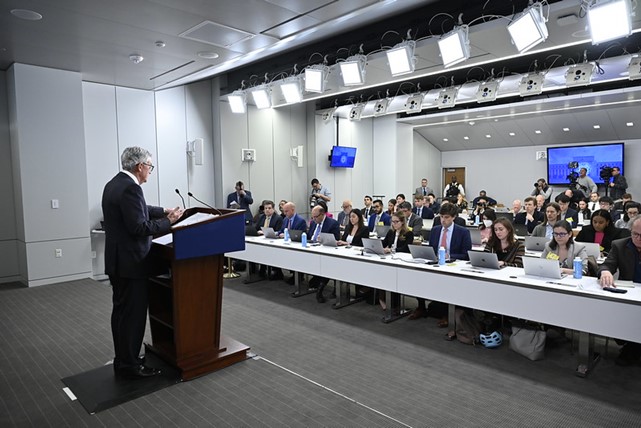
The FOMC Minutes Shed More Light on the Pause
The Federal Reserve released the minutes of its last Federal Open Market Committee (FOMC) meeting. The minutes show the Fed was largely unified behind the pause (no change in monetary policy) decided at the last meeting. The new release also indicates that most members do not believe the Fed has yet tightened enough to reach a 2% inflation target over time, and that the monetary policy committee would eventually have to move rates higher.
The FOMC holds eight regularly scheduled meetings during the year and may call other meetings as needed. The minutes of regularly scheduled meetings are released three weeks after the date of the policy decision. Committee membership changes at the first regularly scheduled meeting of each year.
Synopsis of FOMC Decision
Buying time to assess the impact of the historically aggressive tightening since March 2022 was an overall message one can derive from the most recent Fed report, and inaction. While “some participants” would have agreed to a rate hike in mid-June, in order to assure the inflation fight headway doesn’t reverse, “almost all participants judged it appropriate or acceptable to maintain” the fed funds rate at the 5% to 5.25% level, to ascertain if more is actually needed.
The minutes provided economic projections not available before its release along with other details not provided in the policy statement or press conference after the meeting. Notable among these disclosures is the level of agreement among voting members to pause. “Most of those participants observed that leaving the target range unchanged at this meeting would allow them more time to assess the economy’s progress,” toward returning inflation to 2% from its current level more which is double the target.
The Fed staff forecasts still foresaw a “mild recession” beginning later in 2023, but those at the Federal Reserve actually responsible for policy were concerned with data that showed a continued tight job market and only modest improvements in inflation. Officials were challenged trying to reconcile economic numbers showing a strong economic trend with evidence of possible weakness, for example, household employment figures pointed to a weaker labor market than the payroll numbers indicated, or national income data that seemed weaker than the more stronger readings of gross domestic product.
It is perhaps easier to understand now after the minutes have been released why Federal Reserve Chair Jerome Powell said just following the June meeting that the decision marked a switch in strategy. The U.S. central bank would now be focused more on just how much additional policy tightening might be needed, and less on maintaining a steady pace of increases.”Stretching out into a more moderate pace is appropriate to allow you to make that judgment” over time, Powell said.
While Powell also emphasized a united front among the 18 Federal Open Market Committee members, noting that all of them foresee rates staying at least where they are through the end of the year, and all but two see rates rising. That is confirmed again by the minutes, which show some misgivings among the more dovish policymakers. Atlanta Fed President Raphael Bostic, for instance, has said he thinks rates are sufficiently restrictive and officials can now back off as they wait for the lagged impact from the 10 hikes making their way through economy.
There are four more FOMC members scheduled in 2023, the next meeting on monetary policy will be held on July 25 and July 26.
Managing Editor, Channelchek
https://www.federalreserve.gov/newsevents/pressreleases/monetary20230705a.htm
https://www.federalreserve.gov/monetarypolicy/fomcminutes20230614.htm